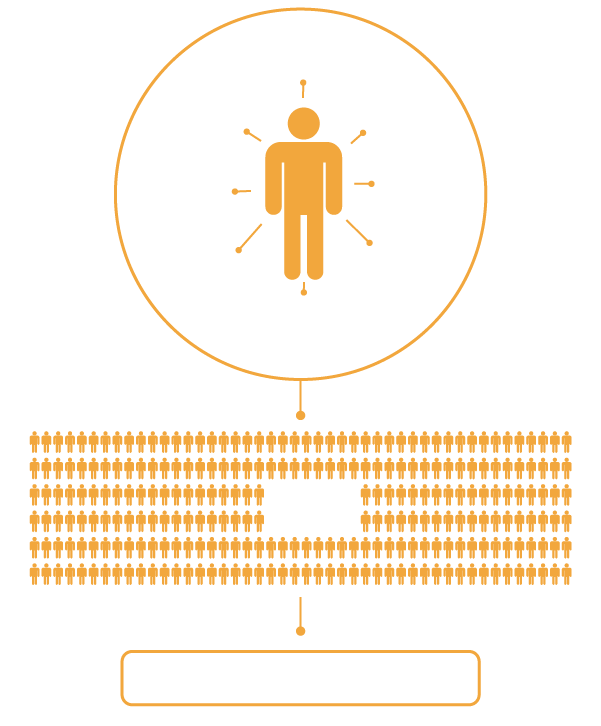We measure a large range of molecules
Using today's technologies we have the capability to measure every molecule in the blood that can be measured
We perform the following measurements and combine the results with deep, quantitative phenotypic data:
- Whole genome sequencing; ~30x (~25,000 genes; 3 billion nucleotides in each patient)
- DNA methylation analysis (~500,000 methylation sites in each patient)
- RNA sequencing:
- ~100,000 transcripts in each patient
- ~28,000 genes in each patient
- ~6,000 micro-RNA’s (miR’s) in each patient
- Unbiased mass spectrometry of:
- Proteomics: ~1,800 proteins in each patient
- Metabolomics: ~1,100 metabolites in each patient
- Lipidomics: ~150 lipid species in each patient
- “Conventional biomarkers”: we measure a large suite of over 200 “conventional” biomarkers related to inflammation, fibrosis, lipids and lipoproteins, endothelial dysfunction, insulin resistance, etc.

Why do we use whole genome sequencing?
Because over 93% of disease-associated genetic variants are in the non-coding portion of the genome.
Why do we use “panomic” approach, not just whole genome sequencing?
Because taken together, known genetic variants cannot explain more than 5-10% of a disease trait/phenotype.
Deep
learning
Take EVERY panomic and molecular datapoint as above and generate scientific insights in an unbiased, hypothesis-free approach.